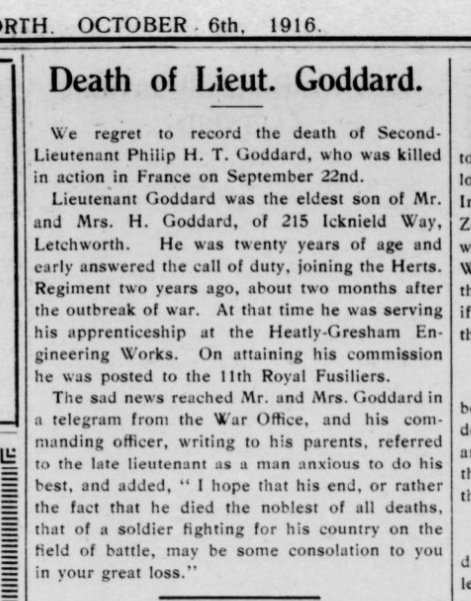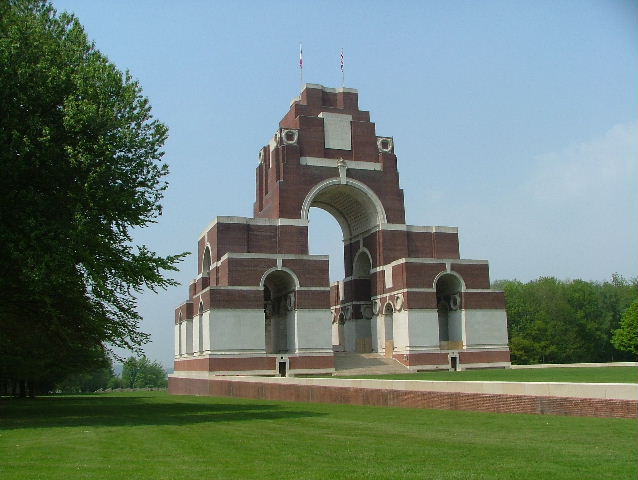Name
Philip Henry Thomas Goddard
1896
Conflict
First World War
Date of Death / Age
26/09/1916
20
Rank, Service Number & Service Details
Second Lieutenant
Royal Fusiliers *1
11th (County of London) Bn.
Awards: Service Medals/Honour Awards
British War and Victory medals
Cemetery/Memorial: Name/Reference/Country
THIEPVAL MEMORIAL
Pier and Face 8C, 9A and 16A
France
Headstone Inscription
Not Researched
UK & Other Memorials
Stained Glass Window, Hitchin Boys Grammar School, St Mary's Church Roll of Honour, Hitchin, Letchworth Town Memorial
Pre War
Wartime Service
In December 1914 Philip wrote to the Letchworth Citizen “I have been asked by my friends in E (Letchworth) Coy, to say thank (sic) through ‘The Citizen,’ the residents of the Garden City for their king wishes and presents for which we are very grateful. We wish all out friends in Letchworth a hearty Christmas.”
Later he received a commission as a 2nd Lieutenant in the New Army in June 1915 – Gazetted on the 17th - and was attached to the 15th Battalion Royal Fusiliers (City of London Regiment).
In May 1916, he went to France having transferred to the 11th (Service) Battalion of the Royal Fusiliers and was died of wounds received while leading his platoon. His Company had been set a difficult task for the 26th September and although Philip did not live to see it, his Company won great distinction in the engagement. His Commanding Officer testified that he was an extraordinarily keen officer, cool under fire and extremely anxious to do his best for his men, he wrote: “I hope that his end, or rather the fact that he died the noblest of all deaths, that a soldier fighting for his country on the field of battle, may be some consolation to you in your great loss.”
The task to which the Commanding Officer was referring related to the attack on Thiepval village. The 11th Battalion was part of the 54th Brigade of the 18th Division and had orders to attack from the south and to clear the enemy from their network of trenches and dugouts on the left flank The Brigade was allotted only 300 yards of frontage, but in the area were 144 deep German dugouts in addition to those round Chateau Redoubt. There had been an allied bombardment for three days and the infantry attack began at 12.35pm on the 26th September 1916. The fighting was extremely fierce with a heavy German barrage, but at the end of the day, the great fortress of Thiepval was in British hands. The cost was heavy and included the 11th Battalion's Colonel Lt Col C.C. Carr, Philip and many hundreds of his comrades.
Additional Information
*1 Believed more correctly, (County of London) Bn. London Regiment (Finsbury Rifles).
Acknowledgments
Adrian Dunne, Dan Hill, Janet Capstick, David C Baines, Jonty Wild



